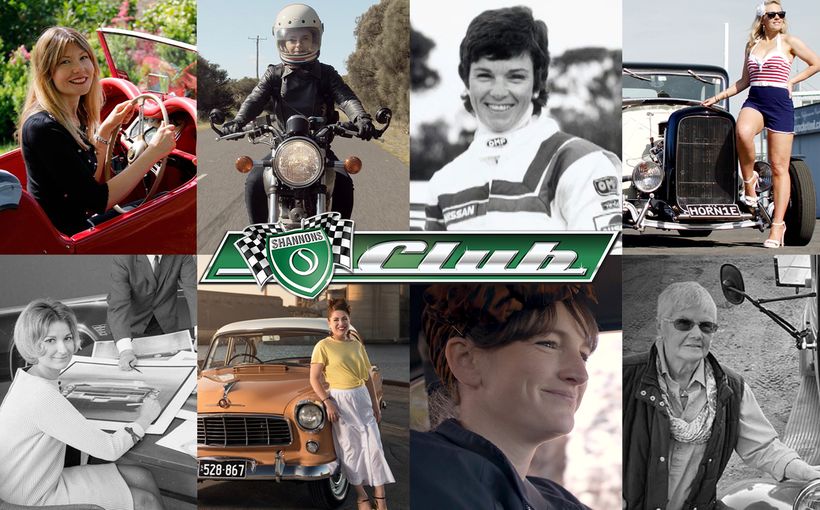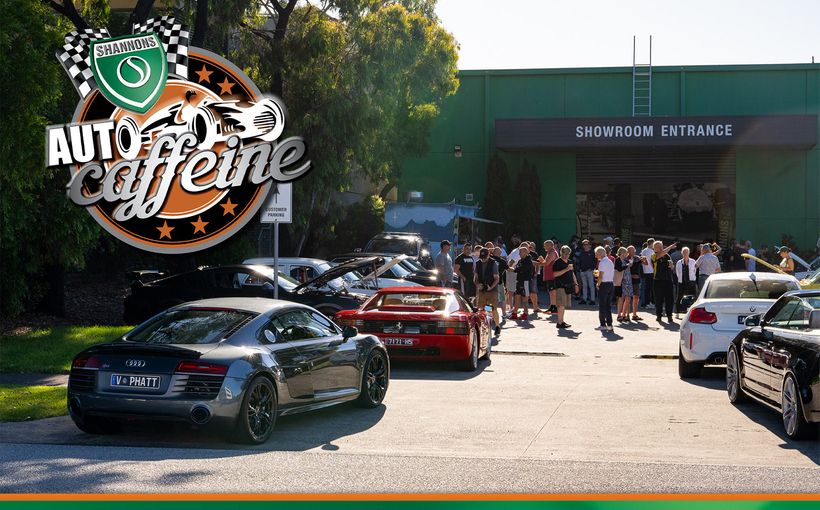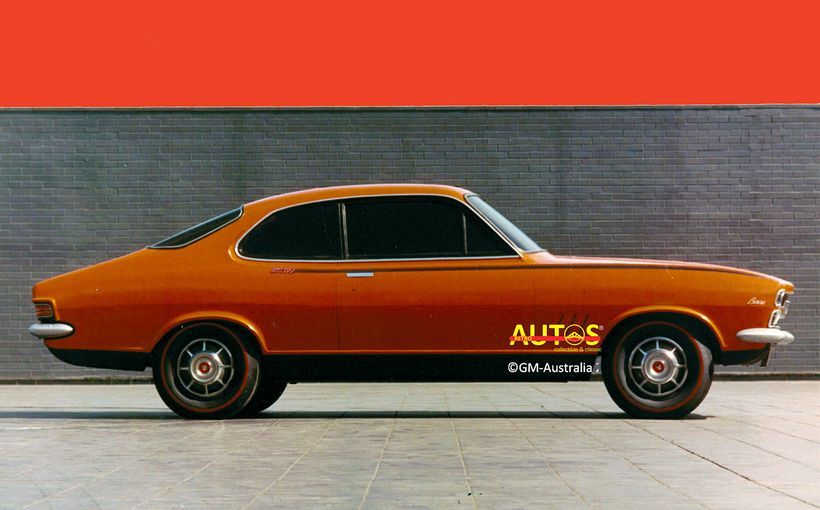1953: Memorable all-new cars and milestones

What a year! Buick was celebrating its 50th anniversary. Ford was also 50 years old and released its landmark F100 truck, as showcased in last month’s Retroautos.
BMC experienced its first full year of operation and Spain’s SEAT debuted its first car. Meanwhile, Japan began making cars sourced from the UK and France.

Locally, Holden built its 100,000th 48-215, Ken Tubman won the first Redex trial in a Peugeot 203 and the Age newspaper reported that the VW Beetle would be available in November.
Everyone will have their favourite all-new cars and milestones from 1953. These are my most memorable.
Motorama: Perchance to dream

GM unveiled six dream cars—Chevrolet Corvette, Cadillac Orleans and Le Mans, Pontiac Parisienne, Buick Wildcat and Oldsmobile Starfire—for its 1953 multi-million dollar Motorama extravaganza. All paraded futuristic wraparound windscreens and were a predictor of GM’s styling direction. Indeed, the Motorama was a very visible demonstration of GM’s technical, styling and financial prowess.

Also unveiled were three limited-edition convertibles: Cadillac’s Eldorado, Oldsmobile’s Fiesta and Buick’s Skylark. Although the Buick did not have a “panoramic” windscreen, it boasted the marque’s first OHV V8 engine.

An upcoming Retroautos will feature the 1953 Motorama in full, including rarely published photos and advertising. The development of the 1953 Corvette was covered in a previous Retroautos. There is a link at the end of this story.
Detroit Auto Show: All Ford
In early 1953, the Lincoln-Mercury division of Ford decided to revive the Detroit Auto Show, which had not been held since 1941. They wanted to offset the publicity surrounding GM’s Motorama.
The star of the event was the Lincoln XL 500, Ford’s second dream car of the 1950s. Many of its design themes ended up on Ford cars during the next five years. See a link at the end for more on the XL 500.


The event also included seven long forgotten and rarely photographed Lincoln show cars: Anniversary, Maharajah, Kentucky Colonel, Cadet, Midshipman, Bahamian and Contemporaire. Each had bespoke paint colours, special exterior trim and custom interiors. The Anniversary’s interior, pictured here, was plated in gold, as were the bumper bars and grille.

Ford Anglia/Prefect: Strutting its stuff

The Anglia/Prefect was a smaller version of the successful 1951 Consul/Zephyr. With an all-new unitary body, "three box" styling and the MacPherson strut front suspension, the only drawback was the continued use of a side valve 1.2 litre four-cylinder engine, three-speed transmission and vacuum operated wipers. The small Ford’s styling made the Austin A30 and Morris Minor look old fashioned.

Standard 8 and TR2: Triumph’s triumphs
Triumph boss, Sir John Black, wanted to sell a modern small car that was priced less than the Austin A30 and Morris Minor, but still made a profit. He achieved that objective with the Standard 8. It sold for £481. That was 5% less than the Austin A30 and Ford Anglia, and 15% under the Minor. Its styling is certainly more svelte than the Austin and Minor and equalled the Ford Anglia/Prefect.

Costs were minimised by using sliding side windows and eliminating the boot lid. The passenger side windscreen wiper and sun visor were optional extras. The 8’s engine was an all-new 803cc four-cylinder OHV unit linked to a four-speed gearbox. That put it ahead of the Anglia/Prefect in drivetrain technology.

Aimed at the American market, the TR2 sports car set a price/performance/styling benchmark that MG could not match until the MGA arrived in 1955. Triumph sold over 8,600 TR2s, mostly in the USA.
Isetta, Messerschmidt, DKW and Lloyd 400: No joke two strokes

The Isetta originated with the Italian company Iso. During the 1950s, production was licenced to other companies, including BMW.
In fact, the Isetta saved BMW. It was struggling financially and the money BMW made from the little car provided much needed cash flow until the 700 model, based on a lengthened Isetta, arrived in 1959.

For a decade after WWII, Messerschmitt was only allowed to make non-aero products, such as the KR175 micro car. The KR175 evolved from a vehicle created by Fritz Fend to give mobility to disabled war veterans.
The Isetta and KR175 sold in reasonable numbers to those who wanted more than a motorcycle but did not have the money for a regular car.

Behold the DKW 3=6! Powered by an 893 cc three-cylinder two stroke engine driving the front wheels, DKW reckoned their engine was as good as a six, hence the 3=6 label. As for the styling, it=ugly.

Then there is the Lloyd 400. It is one of Carl Borgward’s house of brands. It rode on a timber frame. The panels were made of synthetic fabric. Its air cooled 386cc two stroke engine powered the front wheels. Steel fenders arrived in March 1953.
As the old saying goes, they don’t make ‘em like they used to. Lucky us.
Aston Martin DB2/4 and Lagonda: For the rich and royals

David Brown acquired Aston Martin and Lagonda in 1947, the latter providing him with a W.O. Bentley designed 2.6 litre six-cylinder engine.
The DB2/4 was offered as a hatchback and convertible. It was slightly longer than the 1950 DB2, allowing a small back seat. An exotic and powerful sports tourer, this car set the template for the Astons that followed. The kings of Belgium and Jordan owned DB2/4s, as did the Duke of Kent, the cousin of Queen Elizabeth II.


The 1953 Lagonda was built by Brown’s subsidiary, Tickford, as a coupe and convertible, and came with a three-litre version of Bentley’s engine.
Prince Phillip purchased a Lagonda convertible fitted with a telephone This was an unheard-of combination of technology and luxury for the early 1950s. It also had a power roof, another bespoke addition. He shipped the car to Australia in 1956 when he was here to open the Olympic Games.


Mercedes-Benz 180: Re-establishment.

The 180, coded W120, was Mercedes’ first unitary construction. It was launched with a four-cylinder engine. During the 1950s the basic body shell was lengthened to accommodate a six-cylinder engine and/or provide increased passenger space. This was the car that re-established Mercedes in the passenger car market across the world.
MG Magnette, Wolseley 4/44 and Riley Pathfinder: Great shapes

These Gerald Palmer designs are some of the best-looking UK cars of the early 1950s.
The 4/44 and Magnette shared the same body shell and were progressively unveiled and production commenced between late 1952 to early 1954. Both used four-cylinder engines. The 4/44 made do with 1.25 litres. The MG fared a little better with BMC’s new 1.5 litre B series. Apart from the engines, here’s how to tell them apart. The Wolseley has straight chromed trim along the front fender. The MG’s curves down and around the front wheel arch.

The Riley Pathfinder (and its 1954 Wolseley 6/90 clone) appeared in October 1953. Using a 2.5 litre four it was a surprisingly big car, with a wheelbase of 113.5 inches/2833mm. According to most car magazine reports at the time, the handling was suspect. To make driving even harder, the gear lever was on the right side of the steering column.

Rekord and Kapitan: Bright Opels
The Rekord (picture here in green) and Kapitan were Opel’s first post WWII designs and were of unitary construction, which Opel had pioneered for GM in the 1930s. The Rekord sat on a 98 inch/2487mm wheelbase and had a 1.5 litre four-cylinder engine. The Kapitan’s passengers rode within a 108 inch/2750mm wheelbase. A 2.5 litre inline six did the heavy lifting. These models sold well in Germany, being 2nd and 3rd behind VW’s Beetle, respectively.


Austin Healey: ’52 or’53?

A prototype Healey appeared at the 1952 Earls Court Motor show. That’s when Don Healey did a deal with BMC and why the marque’s devotees choose 1952 for anniversaries. However, sales only commenced in 1953, which is why it is in this story.
Studebaker Starlight/Starliner coupes: Bourke’s best

Studebakers were all new for 1953 but it was the Starliner (pillarless) and Starlight coupes that attracted all the attention. The company’s design consultant, Raymond Loewy, took all the credit but it was Bob Bourke who was the creator. Blending European and American themes, he shaped one of the most admired automobiles of the 1950s.
The coupes established the market for the affordable sporty/luxury “personal” car in the USA, two years ahead of the Ford Thunderbird.
The slinky lines, especially the wrapped rear window, influenced many cars during the next three decades, including the 1955 Sunbeam Rapier, 1971 HQ Monaro, 1964 Plymouth Barracuda and second-generation Camaro/Firebird.

Hudson Jet: Grounded by a sky-high price

The Jet was a compact American car, with dimensions about the same as the FE Holden. The model’s shape was dictated by Hudson’s boss, A.E. Barit, and Hudson’s most successful dealer, Jim Moran. Barit wanted the car to be tall, so that occupants could wear a hat when travelling. Moran liked the styling of the 1952 Ford. That’s why the Jet is tall, narrow and looks like a shrunken ’52 Ford. Hudson’s chief designer, Frank Spring, actively distanced himself from the design process and outcome.

Barit also decided to price the car almost equal to the full-sized Chevrolet. Go figure that decision. Hudson lost $10 million in 1953, mostly because of the Jet’s poor sales. When the profitless company became part of American Motors (AMC) in 1954, the Jet was grounded. Barit “resigned” from AMC in 1956.
Sunbeam Alpine: Grace is granted

The 1953 Sunbeam Alpine roadster was assured a place in automotive history when it appeared in Alfred Hitchcock’s 1955 movie To Catch a Thief, starring Grace Kelly and Cary Grant.
Kelly drove the startlingly blue car along the winding roads above the French Riviera with Grant as a nervous passenger. Most of the scenes were filmed in the Paramount studio in Hollywood, but some were shot on location.
The Alpine was created from the Sunbeam-Talbot 90 sedan. Its clean lines were enhanced by a flush fitting convertible top and removing the exterior door handles and side windows.

Chrysler Concepts: Glimpses of Exner
Chrysler did not have a “Motorama” equivalent to parade its dream cars in front of a mass audience. Even so, it generated considerable publicity with four elegant, fully operational concept cars: Chrysler Super Special/GS-1, De Soto Adventurer, Dodge Firearrow I and Chrysler D’Elegance. Italian coachbuilder Ghia was involved in all four.



All were designed by the Chrysler’s styling boss, Virgil Exner, and they provided a glimpse of the future that he was planning. The D’Elegance was the styling template for the 1955 VW Karmen Ghia coupe. Exner was given the first one registered in Michigan.


FJ Holden: Delayed launch

Holden built 169,969 FJs and if I had to pinpoint when it started to edge its way into our popular culture, I’d say it was in the late 1950s. That is when it began to appear on used car lots in significant numbers. It appealed to those who wanted the ruggedness, space and pace of a Holden, but could not afford a new family sized six cylinder car.

From the mid-60s onwards, a third-or fourth-hand FJ was the cheap car of choice for newly licenced teenagers, hot rodders and those seeking a low-cost entry into motorsport. It was on our speedways that so many made their final appearance.
During the 1980s it seemed that everyone had owned an FJ, knew someone who had owned one or had been driven in one at some time in their life.

When Richard Ferlazzo’s Efijy concept car was unveiled in 2005, and he drove it down Detroit’s Woodward Ave accompanied by motoring journalist Peter Robinson, the FJ’s shape endeared itself to a global audience.
And its position in the pantheon of iconic Australian cars was assured.

Links: BMW 700, Ford F100, 1953 Corvette, Ford Dream Cars, Eldorado.
Retroautos is written and published with passion and with pride by David Burrell. Retroautos stories and images are copyrighted. Reproducing them in any format is prohibited. Retroautos is a registered trademark. Reproducing it in any format is prohibited.









